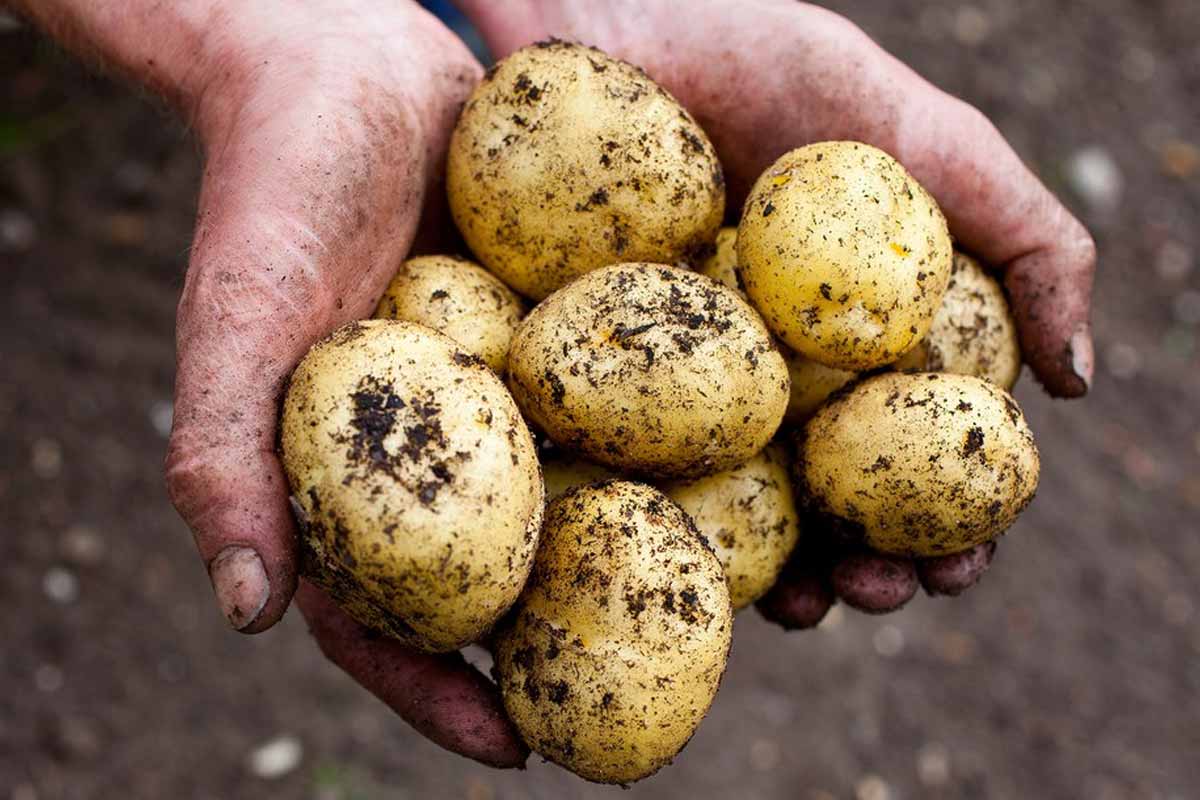Cool air, warm soil, and careful timing can turn autumn into bonus yield. Plant now, and you secure fresh potatoes just as nights sharpen. Results depend on climate, quick-maturing varieties, and simple protection. With steady moisture, loose soil, and smart frost strategy, the season stretches. You harvest clean skins, bright flavor, and reliable meals while markets thin and garden beds keep producing.
Why Fall Planting Works in Mild-Winter Regions
Mild-winter zones make autumn planting practical. Gardeners across the Mid and Lower Atlantic, the Gulf Coast, and the coastal Pacific report strong second harvests. Cooler nights reduce pest pressure, while soil still holds warmth. In that balance, potatoes set quickly and size up fast, so late-season baskets feel abundant rather than rushed.
Short days demand a clear calendar. Count backward from your average first frost and choose fast-maturing varieties. Give plants enough runway to finish before deep freezes. Cooler air supports tuber formation, while steady soil heat keeps growth active. That mix builds dense flesh, steady texture, and dependable storability without forcing plants through stressful heat.
Soil temperature guides the rhythm. Growth hums between 50°F and 70°F, which many autumn beds deliver. Because nights cool gently, foliage stays efficient. Fewer insects test the plants, and water demand stays moderate. With smart spacing and mulch, beds keep moisture even, so tubers fill uniformly and avoid hollow centers or stress cracks.
Site, Soil, and Spacing for Healthy potatoes
Sun drives yield, so choose six to eight hours of direct light. Good drainage matters because roots need air, not puddles. If soil is clay heavy, lighten texture with compost, peat moss, or sand. Aim for a slightly acidic pH of 5.0 to 6.5, since that range improves nutrient availability without complicated amendments.
Plant warmed, sprouted seed pieces to avoid dormancy surprises. Dig a four-inch-deep trench or individual holes and mix a quality organic fertilizer into the bottom zone. Set pieces eyes up, spaced ten to twelve inches apart, then backfill gently. That layout keeps tubers evenly sized, while roots travel easily through loosened soil for consistent growth.
Water strategy changes as plants emerge. If soil is dry, water lightly at planting, then wait for green shoots. After emergence, water two to three times weekly when rain misses. Too much water invites rot, so check moisture at knuckle depth. Balanced moisture maintains canopy vigor and supports steady bulking of underground potatoes without splitting.
Water, Mulch, Hilling, and Frost Management
Moisture must stay even, not excessive. After emergence, schedule irrigation based on feel, not habit. Two to three waterings per week work when skies stay dry. Because roots need oxygen, avoid soggy beds. With steady moisture, potatoes avoid stress. Skins develop smoothly, and flavor stays clean, which makes storage simpler and cooking more predictable.
Mulch sets the floor for stability. Lay two to four inches of clean straw soon after planting. That shield blocks sunlight, prevents greening, and slows evaporation. As foliage reaches six to twelve inches, “hill” with four to six more inches of straw or soil. Hilling protects forming tubers, expands the rooting zone, and supports upright stems.
Watch temperature like a hawk. Tops die around 28°F, and frozen soil injures tubers. When forecasts flirt with a sharp dip, cover plants with a breathable blanket for the night, then remove it when air rebounds. Plan to harvest before deep freezes lock the ground. That timing preserves skins and stops cold damage before it spreads.
Seed, Varieties, and Rotation that Respect potatoes
Fast finishers fit autumn. Yukon Gold, Purple Viking, and Dark Red Norland size up quickly in cooling air. Warm saved seed to room temperature and confirm visible sprouts from the eyes. Sprouts prove dormancy has ended, so growth begins on time. That check helps fall potatoes sprint to maturity despite shorter days and cooler nights.
Sourcing needs a plan. Many catalogs sell seed only in spring. Save clean, disease-free tubers from your earlier crop, labeled by variety. Ask local farms or regional suppliers who sell year-round. Keep pieces firm and dry, and skip any soft, smelly, or damaged candidates. Good seed starts strong foliage and builds uniform tubers.
Rotation breaks disease cycles. Move plantings away from other nightshades—tomatoes, peppers, eggplants—for at least twelve months. That gap reduces soilborne problems and improves vigor. Refresh beds with compost to feed soil life, then balance nutrition with a gentle organic fertilizer at planting. With rotation and fertility aligned, plants push roots fast and fill evenly.
Harvest, Curing, and Storage Without Guesswork
Maturity arrives on a clear signal. Leaves yellow, then brown, and vines die back in late fall or early winter. Many varieties reach full size about 90 days after planting, which fits the autumn window. Harvest before the ground freezes solid, and lift carefully, so skins remain intact. That care protects flavor and texture in storage potatoes.
Use tools that treat roots kindly. Slide a fork or shovel outside the canopy and lever soil upward. Pull tubers by hand, searching edges for smaller stragglers. When the soil runs dry and crumbly, pull the whole plant; several tubers often rise attached. Work slowly and avoid gouges, since cuts shorten storage life dramatically.
Cure before long storage. Leave tubers unwashed and dry while skins harden after vines die back. Then move them to a cool, dark, ventilated space, away from sunlight. Shelves, slatted crates, or mesh bins let air move. Wait to wash until cooking day. With calm temperatures and airflow, quality holds deep into winter meals.
Practical choices that turn autumn beds into reliable abundance
Plan from your first frost date, then choose quick varieties and plant only sprouted seed. Keep moisture even, hill on schedule, and protect when a sharp dip threatens. Lift as vines fade, then cure and store in air, not plastic. With that rhythm, fresh potatoes carry your kitchen comfortably through the cold months.
